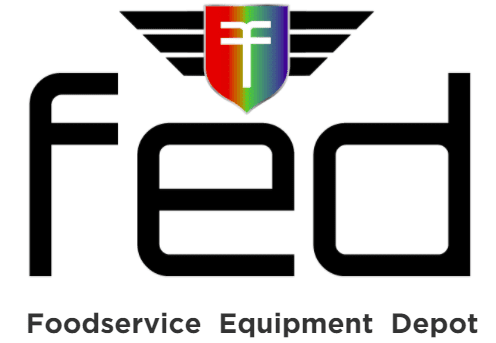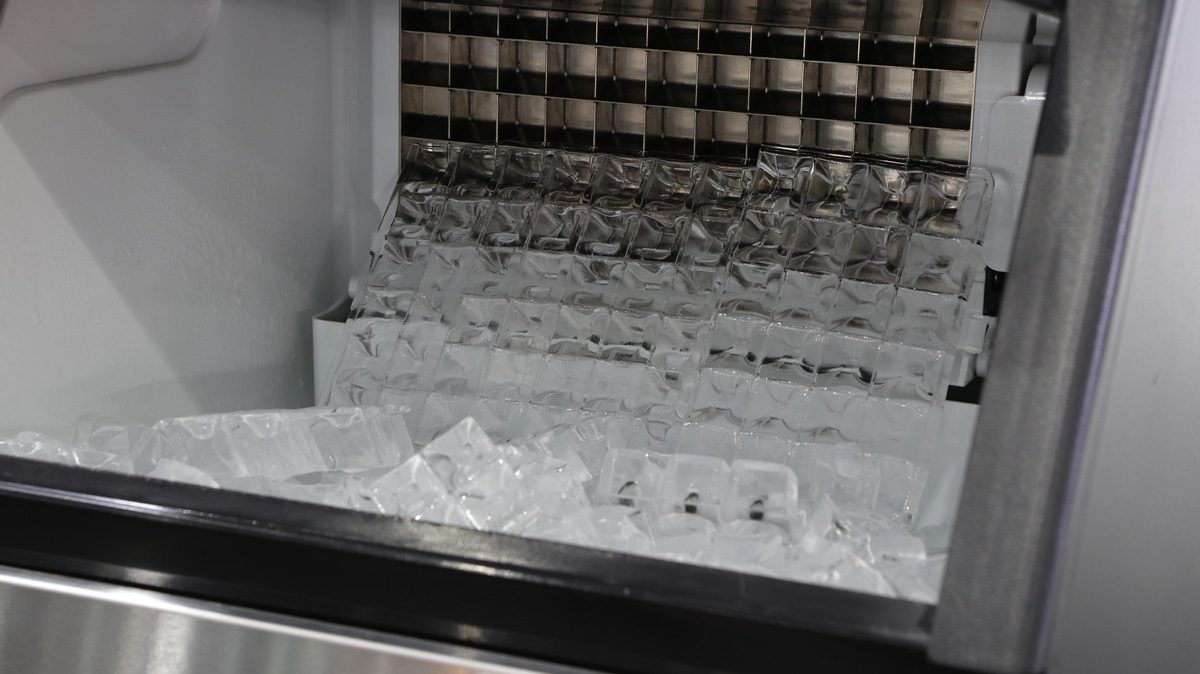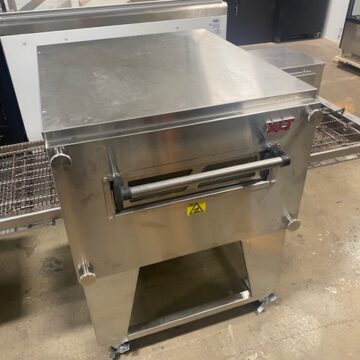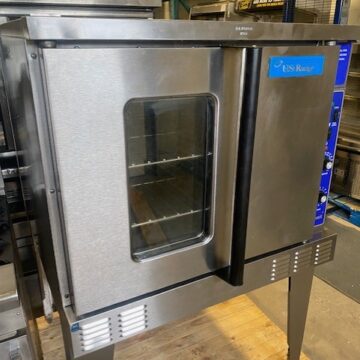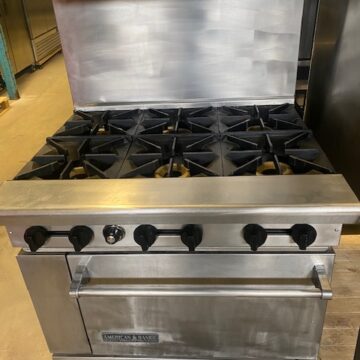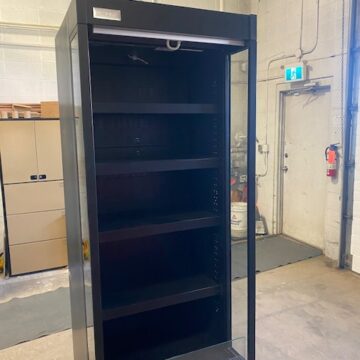Adding a commercial ice cube maker to your restaurant kitchen can help you prepare ice-cold drinks on demand and keep fresh food displays crisp all year round. Ice makers generate heat during the refrigeration process, and they need a cooling system to protect the machine from overheating and keep it running well. Here are the main differences between water-cooled ice machine and air-cooled systems for commercial ice machines and how to choose between the two.
Air-Cooled vs Water-Cooled Ice Machine Ice Maker
What is an Air-Cooled Ice Machine?
Air-cooled ice makers use internal fans and vents to pull air from the surrounding environment into the machine and over the refrigeration system. The air moves over the condenser coils and other refrigeration components, reducing the temperature in the machine and releasing warm air back into the atmosphere through various vents.
Advantages of air-cooled ice maker
- Energy-efficient – many brands make Energy Star compliant large cube ice machine ranges.
- Low installation and maintenance costs – they don’t require any drainage, and many appliance servicers are familiar with their construction.
- Reduced water usage – you can use these machines in arid regions with water restrictions.
Disadvantages of air-cooled ice maker
- Not suitable for hot, humid environments – warm air does not cool the condenser effectively, reducing your ice-making capacity or quality.
- Needs extra ventilation space – you must allow for grease and dust-free, uninterrupted airflow around the machine when planning your kitchen.
- Increases ambient temperature – air from the exhaust vents heats the surroundings, creating an uncomfortable work environment.
What is a Water-Cooled Ice Machine?
Water-cooled ice makers use water instead of air to cool the refrigeration components and transfer excess heat out of the machine. This cooling system requires constant cold water flow into the machine, separate from the water supply needed to make ice. The ice maker uses drainage pipes in place of air vents and releases warm water after use.
Advantages of water cooled ice makers
- Works well in any climate – the machine does not rely on airflow and works well in hot kitchens and outdoor spaces.
- No effect on the room temperature – releasing warm water directly into a drain does not affect the ambient room temperature.
- Quiet operation – there are no fans inside the machine, and its silent operation is ideal for noise-restricted areas.
- Most effective refrigeration system – liquid cooling is more efficient than air-cooling, allowing you to produce a consistent volume of high-quality ice.
Disadvantages of water-cooled ice makers
- High water usage – many countries ban water-cooled machines due to the considerable water wastage. Water usage is not an issue if your building has a re-circulating water system.
- High installation costs – you need to install plumbing with pipes that carry water into and away from the machine before using it.
Considering your budget, infrastructure, space constraints, and climate helps you get the most value from your ice machine. The FED supplies a wide range of commercial ice cube makers from leading brands such as Atosa, Hoshizaki, Follet, and Ice-O-Matic. Contact us for more information.
FAQ
What is a commercial ice maker machine?
An ice machine, also known as an ice maker or commercial ice machine, is a type of refrigeration equipment used to produce different types of ice for commercial and industrial applications.
What is the difference between an air-cooled and water cooled ice machines?
The primary difference lies in how the condenser unit, responsible for dissipating heat, is cooled. Air-cooled ice machines use ambient air to cool the condenser, while water-cooled ice machines use a water line to cool the condenser.
How do I choose the right type of ice machine for my business?
When choosing the best commercial ice machine, consider factors like daily ice production needs, available space, water and air flow requirements, and energy efficiency goals. Consult with experts to determine if an air-cooled or water-cooled ice machine is the better choice for your business.
What are the different types of ice produced by commercial ice machines?
Commercial ice machines can produce various types of ice, including cube ice, nugget ice, flake ice, and combination ice (a mix of different ice types).
How much ice can commercial ice machines produce?
Ice production capacity varies widely, with some machines capable of producing around 350 lbs of ice per day or more, depending on the size and type of ice machine.
Do water-cooled ice machines require a water filtration system?
Yes, it is recommended to install a water filtration system with water-cooled ice machines to ensure proper operation and prevent scale buildup or mineral deposits.
Where should I place my ice making machine?
When installing an ice maker, ensure adequate clearance for air intake and discharge areas (for air-cooled machines) or access to a water line (for water-cooled units). Proper ventilation and easy access for maintenance are also important considerations.
Purchase All Your Commercial Kitchen Equipment From The Foodservice Equipment Depot (The FED)
Purchase All Your commercial kitchen equipment in Calgary, AB from The Foodservice Equipment Depot (The FED). Explore our used Calgary Restaurant Equipment. Enjoy a seamless online ordering experience, ensuring fast and frictionless access to professional-grade food service equipment. Shop at our Restaurant Equipment Warehouse Store in SE Calgary, AB. or our Restaurant Supply Online Store.
